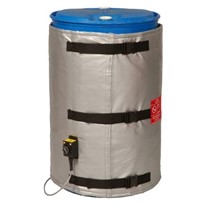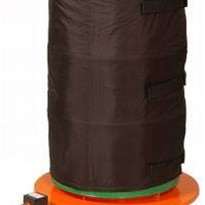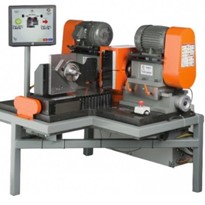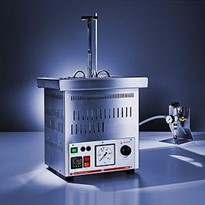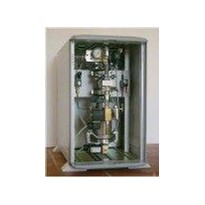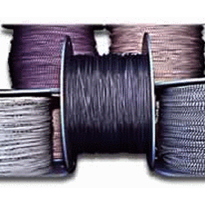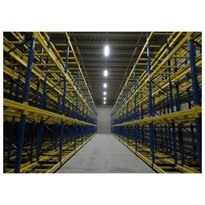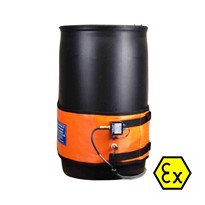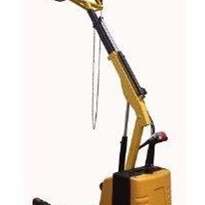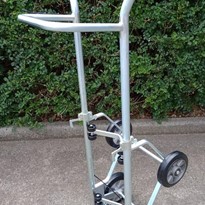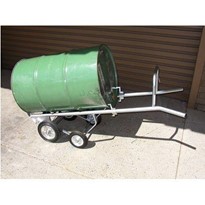Introduction
In industries where contents are stored in 200 litre drums, maintaining an optimal temperature is quite important, especially during colder months. Cold environments result in the slowing of the movement of molecules within a product which increases the viscosity of a liquid to the point where a phase transition sees crystallisation or solidification. The impact of cold can be gradual as with thickening of oils or sudden solidification as with water conversion to ice. Cold therefore affects flow rates causing operational inefficiencies, safety hazards, and damage to content quality. To resolve this issue, the application of heat ensures that molecules can move freely. An insulated drum heating jacket is the most energy efficient method to prevent temperature drop, offering a controlled and efficient way to maintain temperature despite the actual ambient background and in so doing prevents drum contents from thickening, solidifying or freezing.
This guide will assist you in understanding how to choose insulated heating jackets for drums and help you find the best industrial heating solutions to stop winter freezing.
Understanding drum solidification issues
Solidification problems in drums are a common challenge across all industries in winter. Dependent upon climate this can be merely a time inconvenience, or it can be the difference between a successful process and a failed one. Solidification issues are typically caused by inadequate ambient temperatures. However, additional factors can exacerbate the problem, such as sudden temperature drops in areas, poor weatherproof insulation in outdoor applications, and specific thermal characteristics of stored materials like water-based chemicals, oil, grease or honey.
There are two options to deal with this issue. The first is to accept it and use brute force to push heat into the drum for a period before processing. This is often where drum base heaters, stainless steel band heaters, higher power heater jackets, or electromagnetic induction heaters can be very effective.
The second option is to avoid the product becoming too cold in the first place. In the Australian context, an insulated heating jacket placed around a metal or plastic drum during the day, or at end of a day shift, can allow minimal energy usage to maintain the contents at the required temperature overnight ready to use first thing in the morning.
Drums and IBCs heating guide for winter solidification
1. Why use insulated heating jackets for drums?
Insulated heating jackets for drums are devices designed to wrap around and either maintain or increase the temperature of contents. These heated jackets are available in various specifications tailored to meet different temperature or area requirements, including options with variable or digital thermostats, high-grade jacket insulation both inside and out, or designs suitable for hazardous areas.
Utilising a drum heating jacket helps to raise, or maintain, contents to a designated temperature, reducing the risk of damage due to solidified or overly viscous liquid. Moreover, insulated drum heaters represent a cost-effective approach that can avoid significant operational costs as they are energy efficient and controllable with their own built-in reliable thermostats.
2. Types of Drum heating jackets
If you are looking to choose the ideal jacket for your drum heating application, it is essential to select a product that aligns with the specific heating requirements of your products or ingredients. We have partnered with the industrial leading manufacturer, LMK Thermosafe, which offers a wide range of insulated heating solutions tailored for various industrial applications.
High grade insulation heating jacket for drums
- Standard Heating Jacket (HJ): This heater range is engineered with inner and outer layers of polyurethane-coated black nylon and insulated with needled felt polyester, meeting standard heating demands efficiently.
- High Heat Heating Jacket (HH): It is designed to endure elevated temperatures, featuring an inner surface of high-temperature silicone-coated glass cloth and an outer layer of polyurethane-coated black nylon. The insulation is provided by non-combustible stitch-bonded fibreglass matting, ensuring enhanced thermal protection.
- High Power Heating Jacket (HP): Tailored for the most challenging heating requirements, this range boasts chemically resistant, high-temperature silicone-coated glass cloth on both its interior and exterior surfaces. The thick, non-combustible stitch-bonded fibreglass insulation matting it employs ensures top-tier insulation, ideal for high-temperature applications.
3. How to choose the best drum heating jacket for your application
Selecting the right drum heating jacket involves considering the specific properties of the materials you need to heat, the required temperatures, and the operational conditions you’re working under. Each type of heater has incremental advantages which relate to the heating task, such as whether you require gentle heating or more energy to change the contents from solid to liquid. They all have robust thermostats, unmatched Ingress Protection ratings, and armoured cables for safety.
Start by identifying the typical content of your drum heating applications, which might include:
- Waxes; Polymers; Resins; Bitumen; Lubricants; Surfactants; Adhesives; Greases
- Milk Fats; Honey; Edible Oils; Molasses; Lecithins
Determine the product’s heat capacity, viscosity and phase state (gas, solid or liquid) at the temperature you are starting the heating process from, and whether you want just to maintain temperature or increase it. The environmental factors of background temperature during the heating process will need to be assessed. All this will help in understanding the watts density required to achieve your heat task. The harder the task, the more power and thicker the insulation will need to be make for efficiency and combat environmental losses.
Consider other factors which help with the selection of the appropriate heater:
- Ensure the drum heater is compatible with the drum material (metal, plastic, etc.) to prevent any potential damage.
- Think about the sensitivity of the material being heated and choose a heating jacket equipped with variable or digital thermostats, allowing for a balance between cost-effectiveness and optimal heating control.
- Opt for heaters that include weatherproof ratings, and certifications from recognized safety standards to ensure safe and reliable operation.
Case studies relevant to solidification problems
At SBH Solutions, we pride ourselves on our expertise in drum heating solutions. With a team that includes qualified engineers and industrial designers, we are uniquely positioned to assist you in finding the most effective heating solutions tailored to your specific needs.
Through our extensive experience, we have successfully implemented numerous projects across various industries, demonstrating our capability to optimise processes and prevent downtime, especially for freezing problems. Below are some relevant case studies that highlight our approach and the results we’ve achieved:
- Heating grease tank: Grease flows in the cold at Cullen Bullen
- Capilano: Making Honey Flow
- Hamilton Pharmaceuticals: Safely Melted Ingredients Overnight
Efficient industrial heating solutions by SBH Solutions
SBH Solutions provides a range of efficient heating products designed to stop content solidifying, whether this be in a small or larger container, whether this be in a normal safe or a hazardous environment, or whether it be an inside or outdoor location. Talk to us about our range of heating products so that we can help you select correctly and you can have one less problem to worry about.






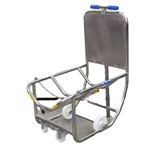
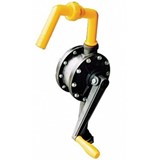
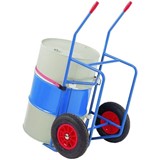
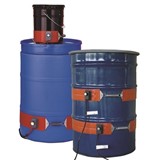
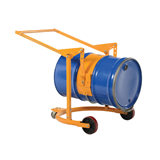
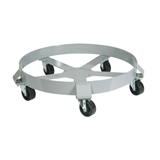
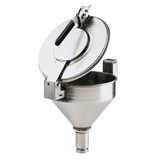
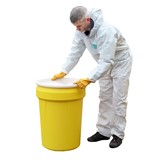
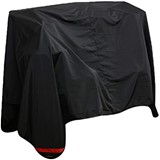
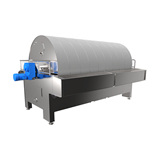
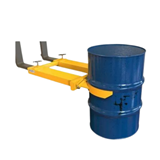


-205x205.jpg)
